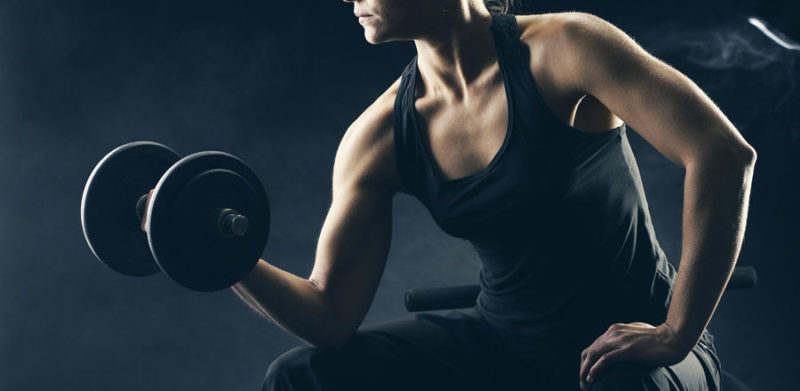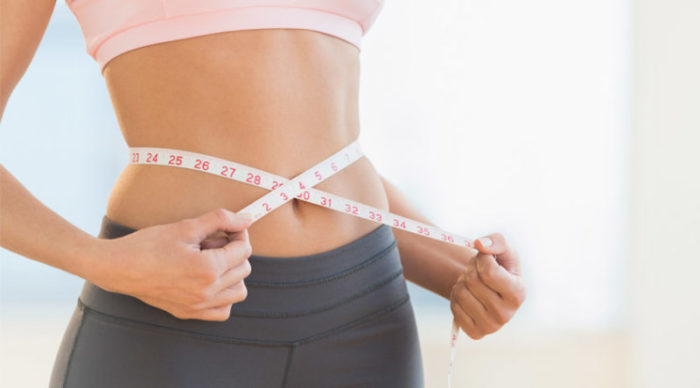
Target Heartrate for Fat Loss: Truth or Myth?
Hit your target heartrate for fat loss and you’ll drop the pounds and keep the muscle. Sounds dreamy right? Well it might just be too good to be true. Find out with SpotMeGirl.
If you’re here or you’ve spent some time working out on a treadmill, you may have heard of the “fat burning zone”. When you see those words, the first thing to pop to mind is some kind of magical zone where you just drop fat like there’s no tomorrow.
However, girl what if these zones aren’t quite as magical as you think? To find out exactly what it is and whether it actually helps you burn fat, we’ve looked into the target heartrate for fat loss. Read on to find out if it’s just a myth, or the key to your fat loss journey.
Article preview:
- What is the target heartrate for fat loss?
- Calculating your target heartrate
- Gadgets to measure your heartrate
- Picking your fat-burning workout
- Other ways to lose fat
What is the target heartrate for fat loss?
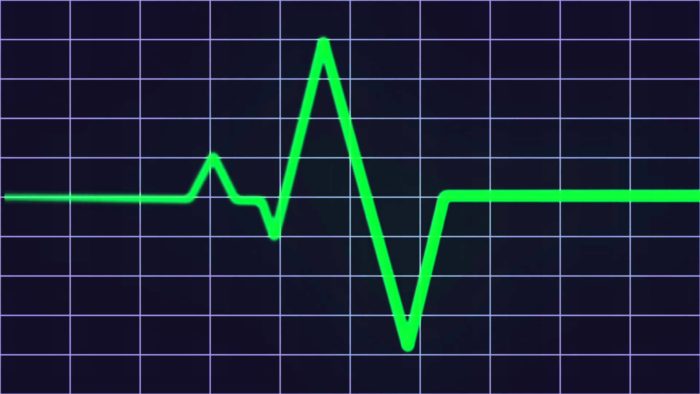 The target heartrate for fat loss is when your heart is pumping at a certain intensity. When its at a certain pace, you’re in the ‘fat burning zone’. This gets its name because, at this point your body is using fat rather than carbs as it’s main source of fuel compared to more intense exercises.
The target heartrate for fat loss is when your heart is pumping at a certain intensity. When its at a certain pace, you’re in the ‘fat burning zone’. This gets its name because, at this point your body is using fat rather than carbs as it’s main source of fuel compared to more intense exercises.
This is usually defined as the point when your heartrate is between 50-70% of your maximum heartrate, with the optimum fat-burning heartrate at about 70%.
This kind of heartrate is activated when you work out in certain ways. For example, low-intensity steady-state cardio (LISS) is a prime example of an exercise that supposedly gets you in that fat-burning zone.
Sounds good right? The thought of burning fat first and foremost sounds like just what you need if you’re on a weight loss hype.
We’ll level with you, the fat-burning zone is often misinterpreted as meaning you’ll burn more fat than if you were to do higher intensity exercises. This may not be the case girl.
LISS style workouts are definitely good for you, you will burn fat and they’re a great way to improve your endurance, especially if you’re starting out on your fitness journey. There’s no doubt that the fat burning zone does exist. But that doesn’t mean it’s the best way for you to burn fat. For quick results, higher intensity options may be your best bet.
However, if you’re a beginner looking to start off your fat burning workout, then finding your target heartrate for fat loss is a great place to begin. We’ll teach you everything you need to know about finding your target heartrate for fat loss and how you get there.
Related article: Best Fat Burner Supplements for Women
Calculating your heartrate
As we’ve mentioned, your fat-burning zone is when your heart is working at around 70% of your maximum heartrate. Now before you go racing off to max out on the treadmill with a heartrate monitor, hold your horses. We can help you calculate your maximum heart rate right here.
Essentially, all you have to do is subtract your age from 220 et voila. So, if you’re 30 years old, simply subtract 30 from 220 and you have your maximum heartrate of 190.
To make it even easier than that, we’ve found all of your fat burning heartrates for you. Check it out.
Fat burning heartrates
| Age | Estimated target heartrate for fat loss |
|---|---|
| 18-20 | 140 |
| 21-25 | 136-140 |
| 26-30 | 133-136 |
| 31-35 | 129-133 |
| 36-40 | 119-129 |
| 41-45 | 122-126 |
| 46-50 | 119-122 |
| 51-55 | 116-118 |
| 56-60 | 112-115 |
| 61-65 | 109-111 |
| 66-70 | 105-108 |
Gadgets to measure your heartrate
If you want to hit your fat burning heartrate, you’ll need to know your how fast your heart is pumping as you work out. To do this you’ll need some smart heart monitoring gadgets on your side.
Wrist heartrate monitors
These are one of the most commonly found forms is the wrist activity tracker. You simply wear them like a watch and they’ll track your steps, your activity levels and your heartrate.
Many designs can be worn throughout the day to track your pulse at different activity levels. From resting to moderate, fat-burning to maximum effort, they can keep track of your heartrate levels.
This is an advantage, as they’ll automatically record everything you do throughout your day. So, no more forgetting to track your workout or relying on the dodgy hand monitors on your running machine.
On top of that, they’re easy to wear during a workout and, due to the convenient position on your wrist, you can monitor your fat burning heartrate throughout.
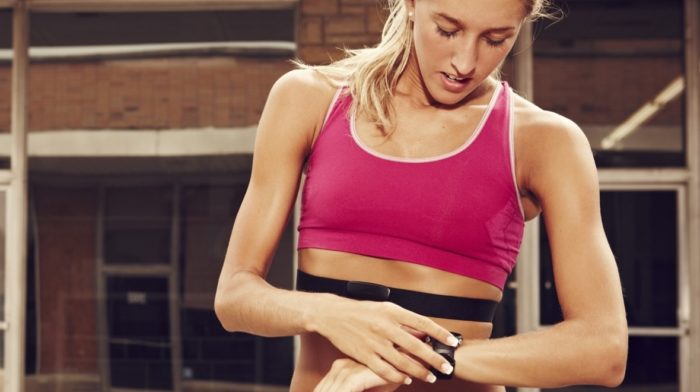
Chest strap monitors
These are generally used to track your heartrate during exercise. They are strapped around your chest, usually just underneath the bottom of your sports bra.
A chest strap monitor can be linked up to your phone, so you can place your mobile somewhere safe, with the app open and see what your heartrate is as you work out.
For a while now, chest straps have been considered the more accurate option. However, a recent study[1] has discovered that the wrist based options appear to be as accurate as the chest monitors. So really, you’ve got plenty of options to help you reach your target heartrate for fat loss.
Picking your fat-burning workout
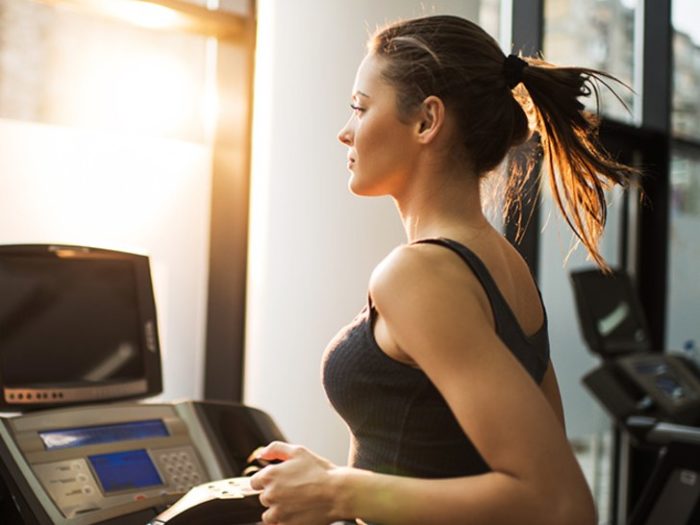
To hit your target heartrate for fat loss, there are a few exercises you can do that will help you find that intensity and stick with it.
To get the fat loss results you’re looking for, you need to be performing LISS for between 30 minutes to an hour around three times a week.
Check out these fat-burning workouts:
Incline walks:
Hit the treadmill and get your heartrate into that perfect fat-burning zone. This only needs to be a brisk walk. So, no running but no taking it easy either, girl.
Set your mph to between 3-5 and set the incline to between 3-5% to add a little extra resistance to the exercise. This will help to support muscle and find your fat burning heartrate, as the incline is telling your body you need to maintain the strength to get up the hill.
Give it a try and have a look at your heartrate to find the right intensity for you.
Swimming:
If you’re more of a water-baby, or if you have sore knees and shins, then swimming might be the perfect alternative.
The resistance of the water is a great, low-impact way of working your muscles, whilst giving you that fat-burning cardio benefit.
If you’re planning to track your heartrate on this one, don’t forget to opt for a waterproof design. If you don’t have a heartrate monitor, a good way to hit that perfect zone is to think about how hard you’re working. Your heartrate zone should be a 5-7 out of 10 in terms of difficulty. So, it shouldn’t be a breeze and it shouldn’t be a sprint either.
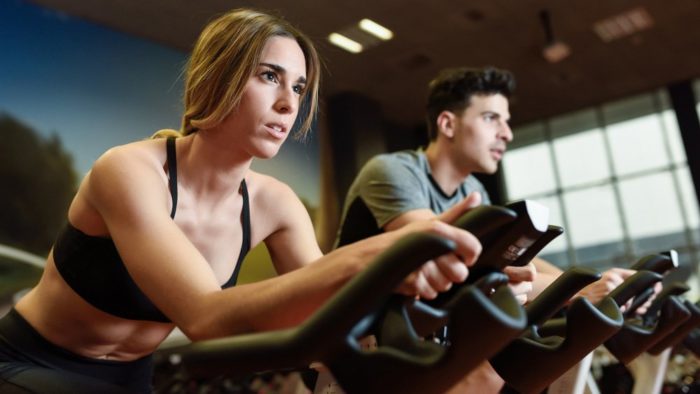
Cycling:
Another great way to hit that LISS workout is with cycling. Pick a static bike or hit the roads with a real one if you know your stuff.
The key with this is to stay below 10mph to maintain a steady fat burning heartrate. Check your heartrate too and you should be perfect placed to torch fat.
Simply set up an episode of your latest binge series and get spinning, girl.
Rowing:
The rowing machine is another classic choice if you suffer from shin splints or sore knees. It has the ability to work your muscles whilst also getting your heartrate right in that fat-blasting sweet spot.
Just stay steady, keep going and row your way to fat loss success in no time.
Other ways to lose fat
Starting off on LISS is a great way to begin your weight loss journey or to complement other fat loss methods. To help you boost fat loss, you should also check out these other ways to lose fat.

Diet
Losing weight happens when your body reaches a very simple, yet important state.
To lose weight you need to be in a calorie deficit. This means you need to burn more calories than you consume.
One way to reach this state is to track what you eat so you don’t take in more calories than you burn.
A good, flexible way of doing this is by using the IIFYM diet. This helps you track your intake, perfect your macros and allows you to be more flexible too.
Whilst we’re on macros, you should also aim to eat a high protein diet. This will support muscle maintenance is essential to burning fat.
Build muscle
As we’ve just mentioned, building muscle is key to helping you lose fat. Muscle takes more energy to maintain for your body – that means it’s burning more calories pound for pound compared to fat. By gaining more muscle, simply existing will burn more cals. Amazing right?!
Not only that but working heavy compound movements like squats and deadlifts burn a load of calories because they recruit so many muscles. By drilling them on the regular, you can torch even more calories with every visit to the gym.
Related article: Essential Lifts Every Woman Should Know
Use HIIT
Science shows that HIIT training can burn 25 to 30 percent more cals that your lower impact, high endurance exercises [2]. A recent study has also show that, this form of high intensity training also turns to fat for energy rather than carbs [3].
So, if you want to burn calories fast, this is one of the most effective types of training out there. Head to the running machine and sprint for 30 seconds, before resting for a minute. Do this 10 times and you’ll have a killer workout, that targets fat with incredible accuracy.
On top of that, they’re short and sweet, so if you don’t have the time to hit LISS, make HIIT your go-to.
Final Word
The target heartrate for fat loss is a thing girl. However, it may not be the best way to get the best fat burning results you’re looking for. It’s a great place to start if you’re a beginner, but complement it with our other methods to seriously torch some fat and burn cals.
Looking for more female fitness wisdom? We’ve got you covered:
- A Girls Guide to Muscle Hypertrophy – Building Shape and Size
- Squats – Everything Women Need to Know
References:
[1] Stahl, S., An, H., Dinkel, D., Noble, J. and Lee, J. (2016). How accurate are the wrist-based heart rate monitors during walking and running activities? Are they accurate enough? BMJ Open Sport & Exercise Medicine, 2(1), p.e000106. [2] Falcone PH, e. (2016). Caloric expenditure of aerobic, resistance, or combined high-intensity interval training using a hydraulic resistance system in healthy men. – PubMed – NCBI. [online] Ncbi.nlm.nih.gov. Available at: https://www.ncbi.nlm.nih.gov/pubmed/25162652 [Accessed 24 Oct. 2018]. [3] Wingfield HL, e. (2015). The acute effect of exercise modality and nutrition manipulations on post-exercise resting energy expenditure and respiratory exchange ratio in wom… – PubMed – NCBI. [online] Ncbi.nlm.nih.gov. Available at: https://www.ncbi.nlm.nih.gov/pubmed/27747847 [Accessed 24 Oct. 2018].
